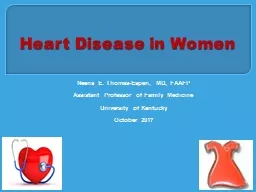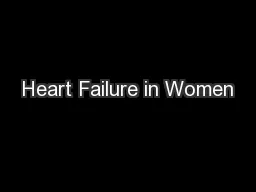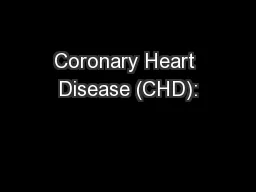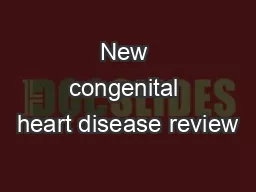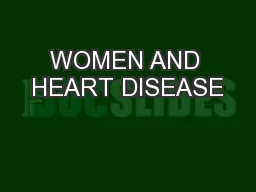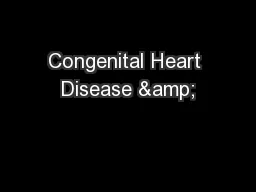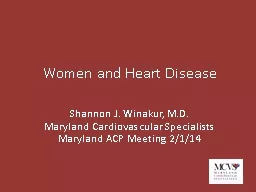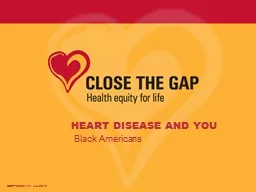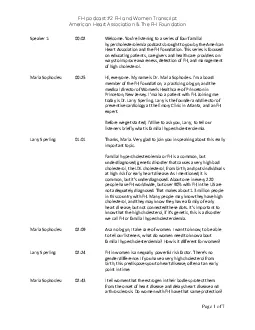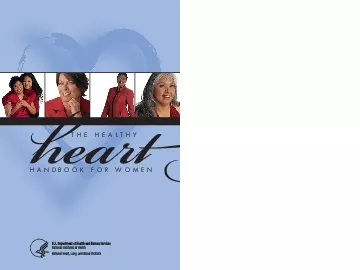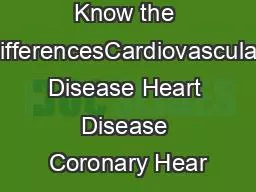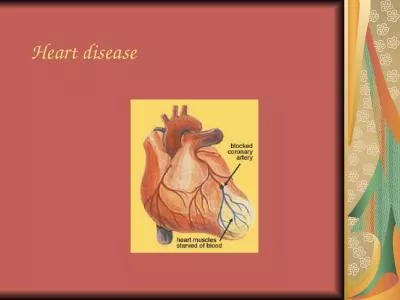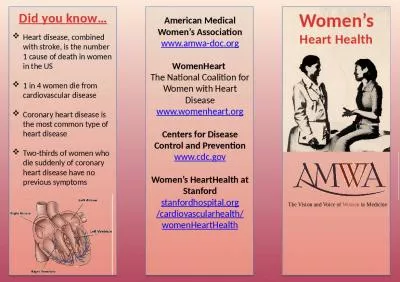PPT-Heart Disease in Women Neena
Author : shoffer | Published Date : 2020-08-27
E ThomasEapen MD FAAFP Assistant Professor of Family Medicine University of Kentucky October 2017 Objectives Statistics of heart disease in women Gender variations
Presentation Embed Code
Download Presentation
Download Presentation The PPT/PDF document "Heart Disease in Women Neena" is the property of its rightful owner. Permission is granted to download and print the materials on this website for personal, non-commercial use only, and to display it on your personal computer provided you do not modify the materials and that you retain all copyright notices contained in the materials. By downloading content from our website, you accept the terms of this agreement.
Heart Disease in Women Neena: Transcript
Download Rules Of Document
"Heart Disease in Women Neena"The content belongs to its owner. You may download and print it for personal use, without modification, and keep all copyright notices. By downloading, you agree to these terms.
Related Documents

